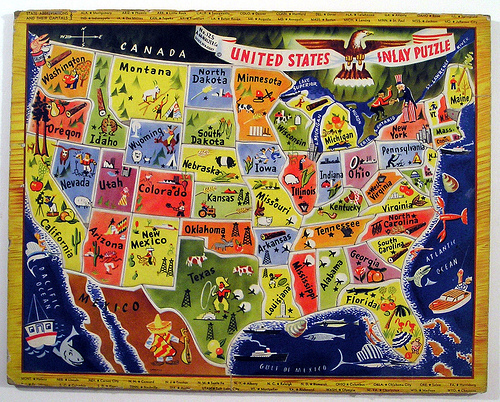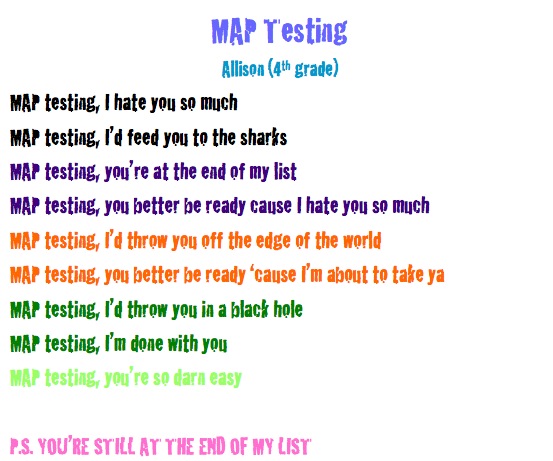Nixon needs to act on standards, now!
Missouri is one of only four states to not have the governor sign on to work together to create a set of voluntary national standards. Texas, Alaska and South Carolina are the other three--conservative governors with presidential aspirations is the common denominator among them.
Why didn’t Gov. Jay Nixon sign on for Missouri? presumably because we are currently without a commissioner. However, since this was an association of governors, Nixon has the authority, the responsibility to lead the state. He doesn’t have to wait until a new commissioner is hired.
But the state doesn’t have that much time. Panels are working on suggested standards set to come out in July.The president of Missouri's board of education said he, too, expected his members to revisit the issue soon."I think we'll seriously consider it over the next several months," said state board President Russell Thompson. "Once we're assured Missouri can have higher standards." (Missouri Balks, St. Louis Post-Dispatch)
Later, a separate national "validation" panel, made of up of experts nominated by the states, will review the proposal. (46 States, Washington Post)
If we wait too long, we won’t have a chance to review the proposal. We have to make that deadline.
Some (such as Caitlin Hartsell for Show-Me Institute) say we don’t need to join the common standards movement because Missouri already has high standards.
And, as it is, fewer than half of Missouri’s students are meeting or exceeding the MAP standards Adopting lower national standards instead would only provide a misleading inflation of achievement metrics.
But this is mixing up the challenge level of the MAP, which is high, with the Missouri standards, which are not. In fact the math standards are under review, which is being extended because of disagreement with the draft standards.
The math wars are nothing new, but the rigor of the Mo. standards is not high, is confusing and contains jargon.Members of prominent university mathematics departments in Missouri are calling for an evaluation of state standards and expectations in K-12 math curriculum. (Math Professors, Columbia Missourian)
For example, for fourth grade, the proposed standard is broken into Core Concept, Learning Goal and Performance Indicator. (Ed. to add--I chose this somewhat randomly. I’m familiar with 4th grade, and fractions are difficult and important. I did not pick and choose.)
Grade 4, Core Concept B--Develop understanding of decimals, including the connections between fractions and decimals.2) Understand relationships among whole numbers, commonly used fractions, and decimals.
- Model fractions (halves, fifths fourths, eighths, and tenths) on a 10 x 10 grid representing one unit in order to convert fractions to decimals.
- Rename whole numbers as fractions with different denominators (e.g., 5 = 5/1, 3 = 6/2, 1 = 7/7), with or without models.
- Relate fractions with denominators of tenths and hundredths to decimals of equivalent values.
- Identify equivalent fractions and decimals (less than one, equivalent to one, and greater than one), with and without models, including locations on a number line.
- Use a variety of methods to compare and order decimals and fractions.
Compare this to a similar California standard:
Number Sense
1.0 Students understand the place value of whole numbers and decimals to two decimal places and how whole numbers and decimals relate to simple fractions. Students use the concepts of negative numbers:
1.1 Read and write whole numbers in the millions.
1.2 Order and compare whole numbers and decimals to two decimal places.
1.3 Round whole numbers through the millions to the nearest ten, hundred, thousand, ten thousand, or hundred thousand.
1.4 Decide when a rounded solution is called for and explain why such a solution may be appropriate.
1.5 Explain different interpretations of fractions, for example, parts of a whole, parts of a set, and division of whole numbers by whole numbers; explain equivalents of fractions (see Standard 4.0).
1.6 Write tenths and hundredths in decimal and fraction notations and know the fraction and decimal equivalents for halves and fourths (e.g., 1⁄2 = 0.5 or .50; 7⁄4 = 1 3⁄4 = 1.75).
1.7 Write the fraction represented by a drawing of parts of a figure; represent a given fraction by using drawings; and relate a fraction to a simple decimal on a number line.
mathstandard
As a state with a difficult assessment, I think we’ll benefit from a common standard. We won’t look bad when compared to states with easy assessments when they upgrade their tests. We won’t need to “dumb down” ours; instead, the rest of the country will need to catch up to our assessments. In fact, our standards need to catch up to our assessments.
Agreeing to work to create the common standards is not the same as agreeing to follow and change the MAP to assess by the common standards. This first step is a no-brainer. I’ll wait until the actual standards come out to make a decision on the next, but with our transient population that needs to meet international standards I applaud the effort and strongly encourage Gov. Nixon to sign on today. Otherwise, we’re likely to be looking at standards we did not have a role in helping to create.
Ode to the MAP

Photo by Marxchivist
While some schools went to extravagant lengths to pump up their students for Missouri’s standardized test, the MAP, others were more low-key.
My daughter’s teacher showed the students a constructive method for expressing their anxieties and other feelings about taking the test by having them write a poem about the MAP to include in their poetry unit. My daughter’s poem included below with permission was inspired by Jack Prelutsky’s Homework! Oh, Homework!
